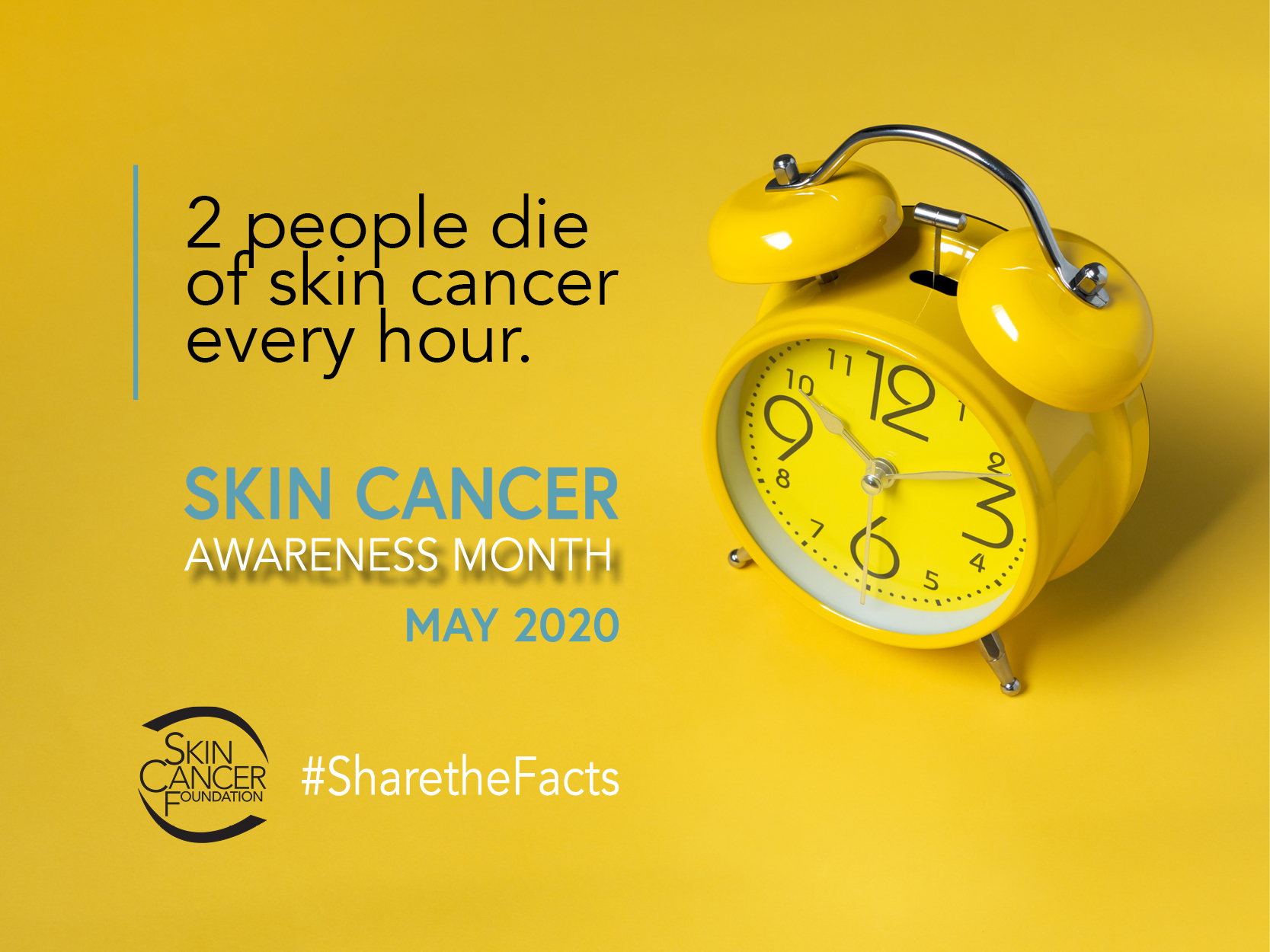May is Skin Cancer Awareness Month
 Skin cancer is the most common cancer in the US with more than 5 million Americans diagnosed every year. Skin cancer, if detected early, can be cured. 90% of patients diagnosed with skin cancer get cured.
Skin cancer is the most common cancer in the US with more than 5 million Americans diagnosed every year. Skin cancer, if detected early, can be cured. 90% of patients diagnosed with skin cancer get cured.
Failure to diagnose skin cancer can be fatal and like all cancers, early detection is key. The good news is that unlike other types of cancer, skin cancer is visible and early detection starts with you. Doctors recommend a self-exam every month.
How to screen yourself for skin cancer?
When performing a self-exam look for anything new, changing or unusual on your skin such as
- A growth that can be in various colors from black to brown, tan, pearly or transparent
- A mole that increased in size, got thicker or changed texture or color. It can be an early sign of melanoma
- A spot that continuously itches, hurts or bleeds
- An open sore that doesn’t close
Check you head in front of a mirror and use a second mirror to examine the back. Check your mouth, lips and nose as well as your ears. Use a hairdryer to check your scalp and expose each section of it. Check your hands and then proceed to your arms without forgetting to check the underarms. Inspect your torso and then your upper back. In front of a full length mirror use a hand mirror to inspect the back of your neck, shoulder and upper back. Then proceed to the lower back continuing down to the back of both your legs and your buttock. Then finish by inspecting both your legs. The best way is to sit down and use a hand mirror and screen the inside of your legs from top to bottom ending with the feet including sole, toes and nails.
How can you get skin cancer?
Indoor tanning and unprotected sun exposure increase the risk of getting skin cancer. Depending on your skin type or genetics you might also have a higher risk of getting skin cancers than others. People with red hair for example have an increased risk of contracting skin cancer. People with atypical moles on their body as well as those who underwent an organ transplant are also at higher risk.
How to protect yourself?
Use a sunscreen daily with a 15+ SPF. Use UV-blocking sunglasses and hats. Stay in the shade. Install protective window films in your car and home. Schedule an annual skin exam with a doctor. Examine yourself monthly. Have a healthy diet and lifestyle.
For more info visit the Skin Cancer Foundation
 New York Personal Injury Attorneys Blog
New York Personal Injury Attorneys Blog


